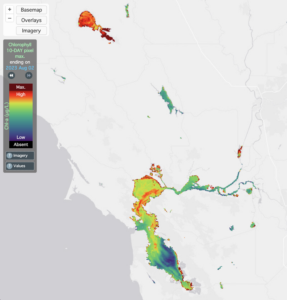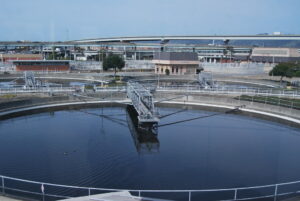When the freighter Cosco Busan spilled 58,000 gallons of oil into San Francisco Bay in November 2007, just before the first spawning herring were to arrive, scientists and fishermen alike were worried that the run could be devastated.
Luckily, the herring arrived late, the catch was a good one, and the fish and their roe were cleared for human consumption. That doesn’t mean the population was unaffected–the adults apparently survived, but the fate of their offspring remains unknown.
It takes at least two years for herring to mature and return to spawn. “So theoretically any impact that the oil might have had would really not be seen for a couple of years,” says Gary Cherr of the UC Davis Bodega Marine Laboratory.
Soon after the spill, Cherr and colleagues from the National Marine Fisheries Service began a study combining fieldwork and complex lab analysis to determine how chemicals in the oil affected herring roe. Their work is part of the official Natural Resources Damage Assessment, which includes analyses of many different species and habitats to assign a monetary cost to the spill’s impacts.
The Busan’s bunker oil was a complex brew, but the research by Cherr and the National Marine Fisheries Service focuses on polycyclic aromatic hydrocarbons (PAHs), which interfere with heart development in fish even at very low doses.
During the herring spawn, the team collected eggs from inside and outside the spill zone. “We saw abnormalities in eggs collected along the spill zone that were not present in eggs collected from elsewhere,” Cherr says. But the team is still working to determine causality, which is difficult in an urbanized estuary like San Francisco Bay, where the “background noise” of pollution is quite high.
To distinguish true signal from noise, the study uses what he calls a “CSI-like approach,” including microscopic video of herring embryos and chemical analysis of the roe and pollutants.
Even so, making a final call on the impact of the spill won’t be easy, especially if there’s a recurrence of ocean conditions like those in 2005 and 2006, when the herring’s plankton food source plummeted. “In two years if we have a really small number of fish returning, can we say this is due to oil?” asks Cherr. “Or is it due to really terrible ocean conditions?”

.jpg)



